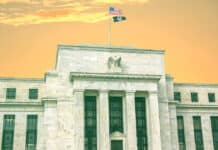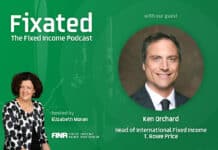
Incarceration Day
If April 2nd was Liberation Day, this may feel like Incarceration Day then. In any case, let’s party as if it were pre-April 2025. The pendulum appears to be swinging hard, but this time as a major boost to risk sentiment, following the announcement of major reductions in tariffs between the US and China for 90 days. Risky assets are recovering aggressively, while UST treasury yields are rising, as the risk of recession is being priced out. While this is a positive development, it is worth highlighting that policy uncertainty is likely to stay elevated, and therefore there is a risk that macro volatility may continue to represent a major challenge in the period ahead. If however, we get some confirmation that there will now be a bit more stability and permanency to the policy environment, this will come down in recent market history as a major turning point. The most favorable version of Trumpilocks, the prevailing macro regime, is characterized by supportive macro drivers for risky assets, stronger growth expectations, higher yields, tighter spreads, and reduced tariff-related inflation fears. With that in mind, inflation-linked instruments may underperform their nominal counterparts, if inflation risks get repriced lower in the face of higher yields. If the Trumpilocks best-case takes hold, we will also likely observe a decline in correlation between equities and bonds—albeit gradually, which means that fixed income is back to providing diversification benefits. Looking ahead, it will also be interesting to watch whether flows will swing back to the US after the post-Liberation Day shock to investor confidence.
The dollar on the hedge
While the USD appears to be bouncing back, at least for now, benefiting from the trade war truce announcement, there are still some fundamental risks to the US currency. The main risk relates to the hedging strategy of international investors. After years of structural dollar strength, it appears that the average hedge ratio of large institutional investors—such as the Japanese life insurers—has fallen to historically low levels, partly reflecting the higher cost of hedging. Specifically, the Bank of Japan reported that the hedge ratio of the nine largest life insurance companies fell to just over 40% in 2023 from 60% historically.[1] Likewise, from the European equity investor standpoint, traditionally, exposure to US equities on an unhedged basis used to offer European investors both higher returns and lower volatility. This year has proven quite different, however. Overall, if international investors—who have owned an increasing larger share of USD assets—raise their FX hedge ratio, it will likely contribute to applying downside pressures on the USD.
Also read: Tariffs Add To A Toxic Combination For US Treasuries
A fairly prudent approach to US HY
It is not the right time to turn full-on bullish on HY. While it is true that the latest developments have been constructive, including the potential trade deals and the resilience of the macro data, the valuation backdrop is not compelling. US HY spreads already have aggressively recovered since early April, which means that the near-term buying opportunity at the index level is probably gone. There are still attractive opportunities for the asset class, but they mainly reflect idiosyncratic dislocations and bottom-up security selection. The good news is that the asset class fundamentals exited the first quarter in good shape for most high yield credits. The not so good news is that the prospective fundamental outlook is more uncertain than usual, and valuation is back to being full. One silver lining for HY perhaps at the broader level is that many other segments of global fixed income screen as being even richer from a valuation perspective. Overall, exposure to HY continues to make total sense in a diversified fixed income portfolio, but a neutral allocation seems to be adequate at this juncture.
Global fixed income is back
A quick look at the fixed income asset class performance leaderboard highlights two key takeaways: 1/ the more global, the stronger the performance; and 2/ fixed income is back to delivering attractive risk-adjusted returns. The top performer in the global fixed income universe has been EM local debt, with an impressive 9.03% ytd.[2] All the global indices are at the top of the leaderboard, including the Global Agg and Global Credit, both producing returns well north of 4%.[3] We believe that the higher the volatility and uncertainty, the better a globally diversified approach will pay off. And to be clear, we are only talking about index performance here. At the bottom of the performance leaderboard stand US tax-exempt munis, the only asset class in the red so far, as well as the EUR Agg, EUR IG (in EUR terms) and leveraged loans. Beyond the absolute performance, it is also worth pointing out that the risk-adjusted returns in fixed income have been particularly attractive. For a large number of fixed income classes, the ratio of annualized return to annualized volatility stands at well above 1.5, signaling a compelling performance per unit of risk. Overall, with risk management being critical these days, let’s flag that fixed income is back to providing attractive risk-adjusted returns.
[1] Sources: The Bank of Japan. Financial System Report, currency hedge ratios among life insurance companies, October 2024.
[2] Sources: Bloomberg, JP Morgan. GBI-EM div index. Data as of 9 May 2025. Returns are gross and in USD.
[3] Sources: Bloomberg. Bloomberg Global Aggregate and Global Indices. Data as of 9 May 2025. Returns are gross and in USD.





























